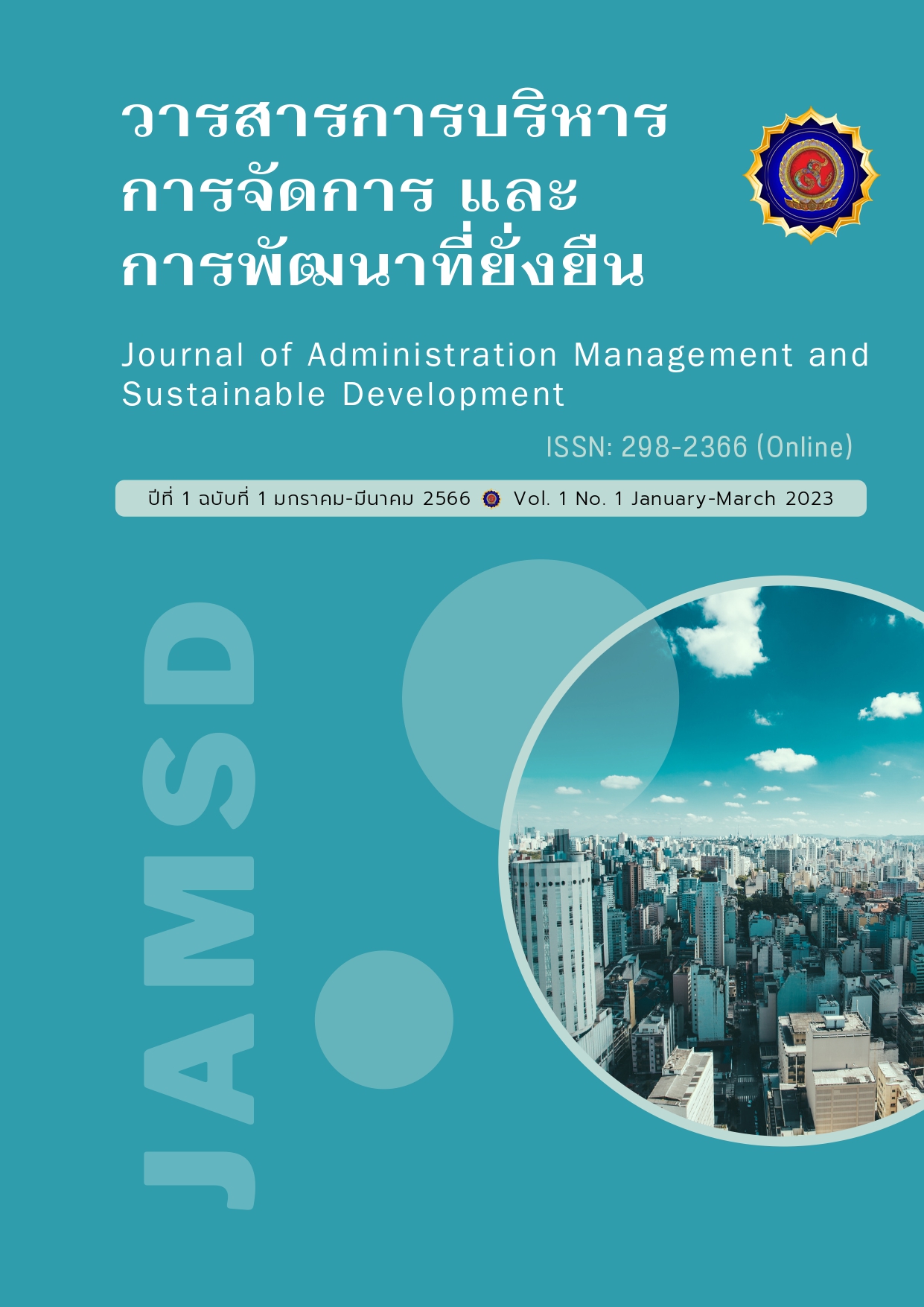Development and Technology Transfer of Economic Crops Local Quality Products Deteriorate Lower Central Community Education
Keywords:
Integration, Technology transfer, Economic Planting, Degraded areaAbstract
Research on the integration and transfer of technology for growing cash crops Quality local products in a deteriorated area. The lower central region community group case study aims to 1) study and analyze the condition of economic crops in the degraded areas of the lower central region and to determine a model for social responsibility management by planting cash crops in the degraded areas. 2) Knowledge management in technology transfer to increase capability to analyze the factors affecting the cultivation of economic crops in deteriorated areas from community wisdom with participation for community groups for community sustainability. 3) Area management by using Cultural Mapping in community management on the area from participatory community wisdom for community groups for community sustainability in order to reduce the destruction of nature preservation. Balancing people, water, forests to increase added value in the area 4) To create income and increase the potential and relationship of participatory agricultural management for community groups for sustainability in the community, the study area was selected Nong Pla Mor Sub-district, Ba Pong District, Ratchaburi Province and Rai Suk Jai Ratchaburi province. The statistics used for research analysis were by Cronbach's alpha coefficient confidence method. Statistics used in data analysis: percentage, mean, standard deviation. The results showed that 1) Planting of economic crops in degraded areas in the lower central region Overall, the area is a deteriorated area. 2)Management of knowledge in transferring technology to increase personnel management capabilities. Participation for community groups for sustainability in the community. 3) Planting economic crops, community management on the area from community wisdom with participation for community groups, making the community have better income and well-being in parallel with the management of the area. 4) Generating income and increasing the potential and relationship of participatory agricultural management using the principle of social responsibility.
References
กลยุทธ์ หนูดำ, ปัญญา เลิศไกร และลัญจกรณ์ นิลกาญจน์. (2014). การพัฒนารูปแบบการผลิตทุเรียนนอกฤดูกาลของเกษตรกร. Narkbhutparitat Journal Nakhon Si Thammarat Rajabhat University, 6(2), 63-73.
ชาติชาย ไวยสุระสิงห์, และชุติมา ไวยสุระสิงห์. (2022). การ ประยุกต์ใช้กระบวนการตัดสินใจแบบหลายหลักเกณฑ์ควบคู่กับแบบจำลองเซลลูล่าออโต้มาต้ามาคอฟในการประเมินพื้นที่ที่ มี ศักยภาพในการเพาะปลูกพืชน้ำมันที่ไม่ใช่พืชอาหารในภาคตะวันออกเฉียงเหนือของประเทศไทย. การประชุมวิศวกรรมโยธาแห่งชาติครั้งที่ 27, 27(1), SGI02-1.
ธวัชชัย ขัวลำธาร และ กฤษณา ไวสํารวจ. (2021). การเมืองในมาตรฐานข้าวอินทรีย์. วารสารมนุษยศาสตร์และสังคมศาสตร์มหาวิทยาลัยเอเชียอาคเนย์, 5(1), 72-84.
พสุธา สุนทรห้าว และวุฒิพล หัวเมือง แก้ว. (2010). ศักยภาพด้านเศรษฐกิจสังคมของไม้ตะกูและโอกาสความเป็นไปได้ของการลงทุนปลูกสร้างสวนป่า. วารสารวนศาสตร์ ไทย, 29(2), 50-63.
นภาพร สุพงษ์. (2015). การมีส่วนร่วมของบุคลากรกับการขับเคลื่อนภารกิจด้านความรับผิดชอบต่อ สังคมและสิ่งแวดล้อมธนาคารเพื่อการเกษตรและสหกรณ์การเกษตร. INTEGRATED SOCIAL SCIENCE JOURNAL, FACULTY OF SOCIAL SCIENCES AND HUMANITIES, MAHIDOL UNIVERSITY, 2(2), 167-187.
วรรณชา กาญจนมุสิก. (2554). การทำกิจกรรมความรับผิดชอบต่อสังคม (CSR) ที่มีผลต่อการตัดสินใจ เลือกซื้อสินค้าและบริการของผู้บริโภคในเขตกรุงเทพมหานคร. หลักสูตรบริหารธุรกิจมหาบัณฑิต มหาวิทยาลัยกรุงเทพ.
แสนใจ พรม และสายฝน. (2015). การวิจัยเชิงปฏิบัติการแบบมีส่วนร่วมเพื่อการพัฒนาสื่อการจัดการเรียนรู้ โดยบูรณาการภูมิปัญญาท้องถิ่นที่สอดคล้องกับวิถีชีวิตในชุมชน.






